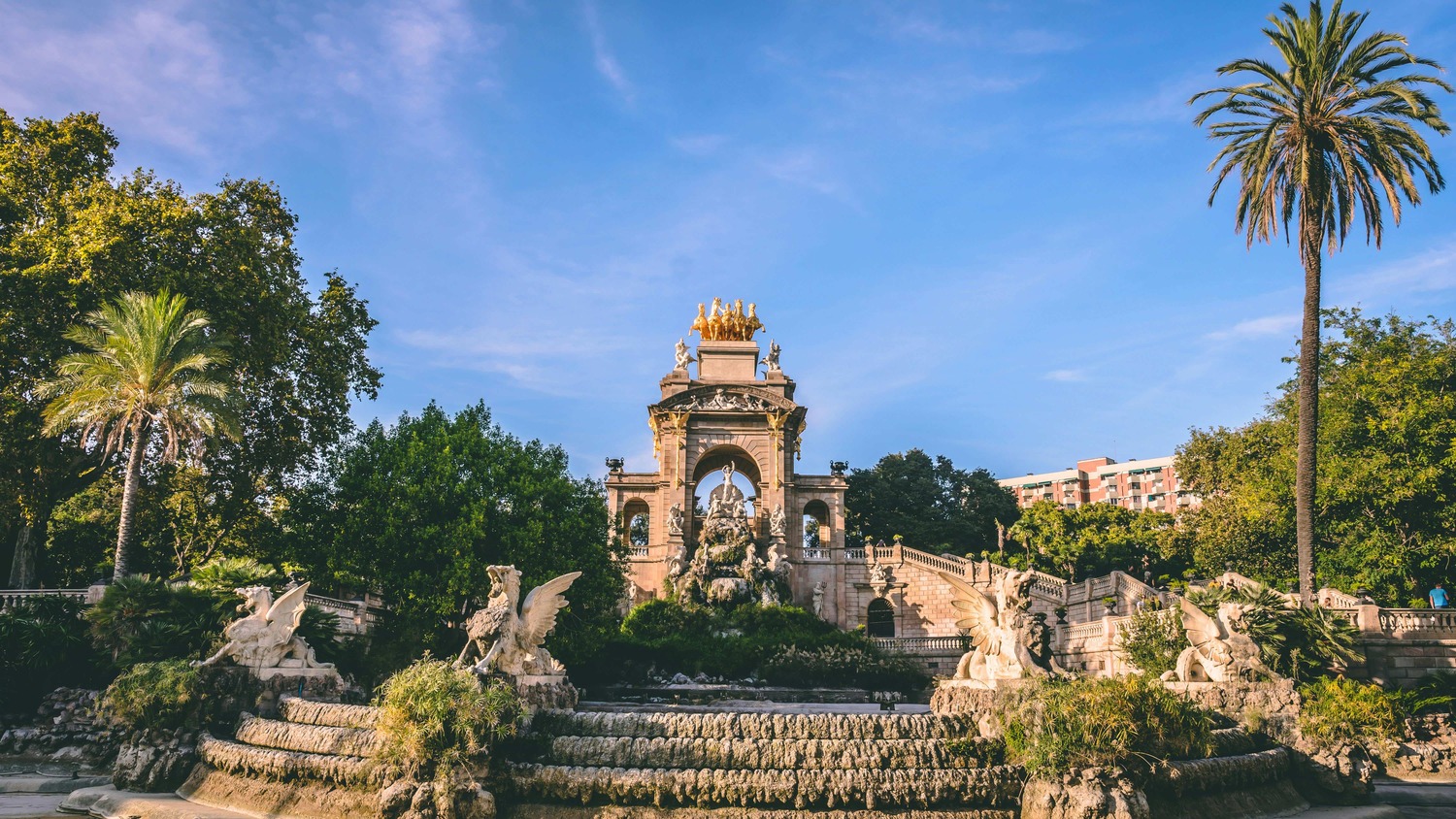
7 Unexpected Hidden Gems in Barcelona by Antoni Gaudí
Not many visitors leave Barcelona without seeing Antoni Gaudí’s Sagrada Família, Park Güell, or Casa Batlló. But there are plenty of lesser-known yet equally impressive works from the father of Catalan modernism (or “modernisme”) all over the city.
In this guide, we’ll go beyond Gaudí’s famous masterpieces and tell you how to find the hidden gems most visitors miss when they come to Barcelona. Fit these landmarks in between your tour of Sagrada Família and Park Güell tour for a truly comprehensive Gaudí experience here in Barcelona.
Why you should visit Gaudí’s unknown masterpieces
Apart from it being a fascinating journey around Barcelona, there are several reasons to add these unknown Gaudí masterpieces to your itinerary.
Here are the top three:
- The crowds at these sites are usually smaller compared to the Gaudí’s more popular attractions.
- You’ll get to see early works from when Gaudí was a young architect.
- You’ll venture out of Barcelona’s city center to neighborhoods you otherwise wouldn’t get to explore.
Bonus: For many of these hidden gems in Barcelona, you don’t need to buy a ticket in advance before they sell out. In fact, you don’t need a ticket at all to see the architect’s smaller public works.
1. Cascada Monumental
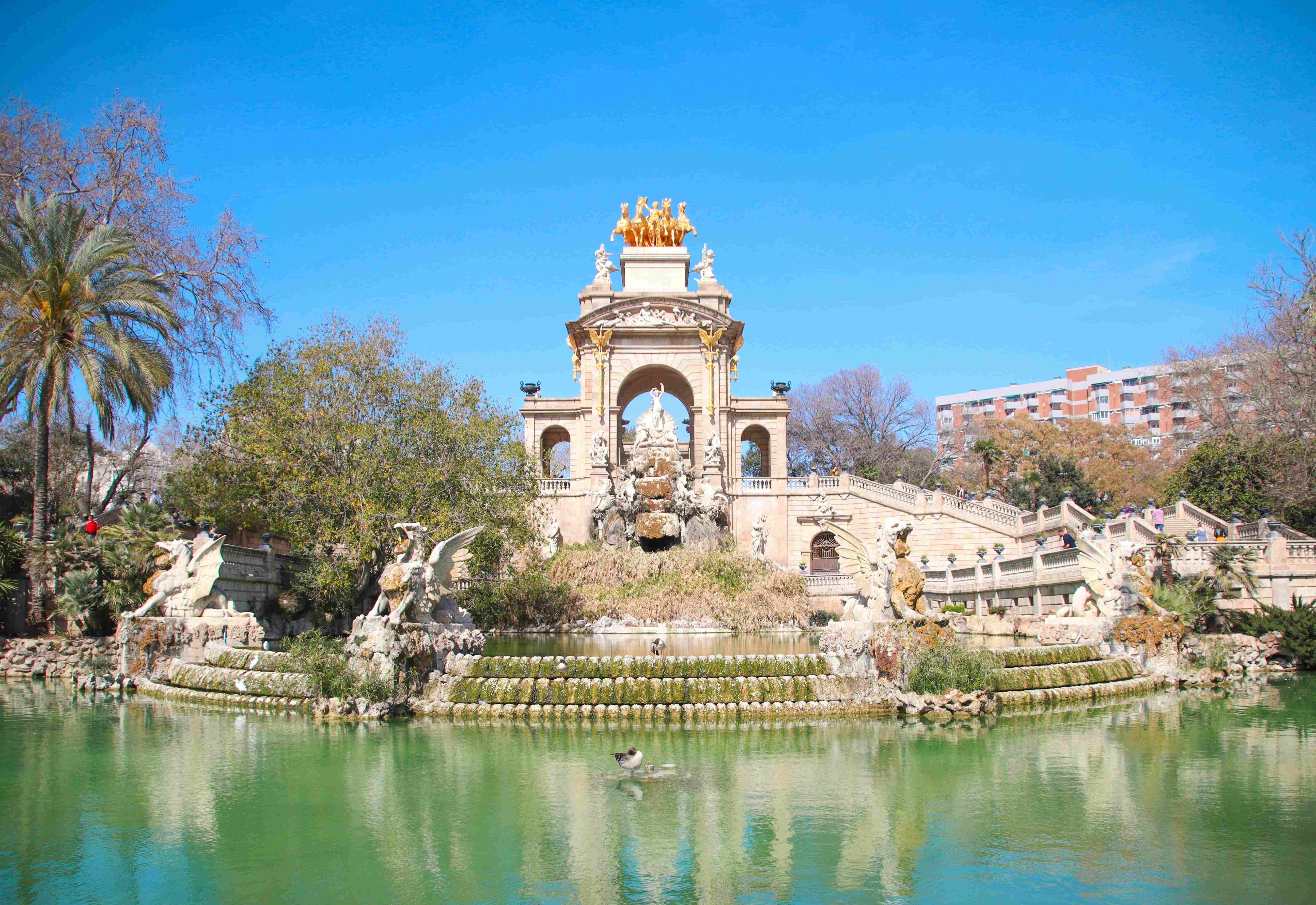
Location: Ciutadella Park in Ciutat Vella
Inside Ciutadella Park — Barcelona’s largest urban green space — you’ll be wowed by the Cascada Monumental, an elaborate fountain reminiscent of the Trevi Fountain in Rome.
“Cascada” means waterfall in Spanish, though the fountain has been switched off since 2023 to conserve water amidst the city’s ongoing drought. Still, it’s worth seeing for the mythological sculptures that make up Josep Fontserè’s design, created for the 1888 Barcelona Universal Exposition.
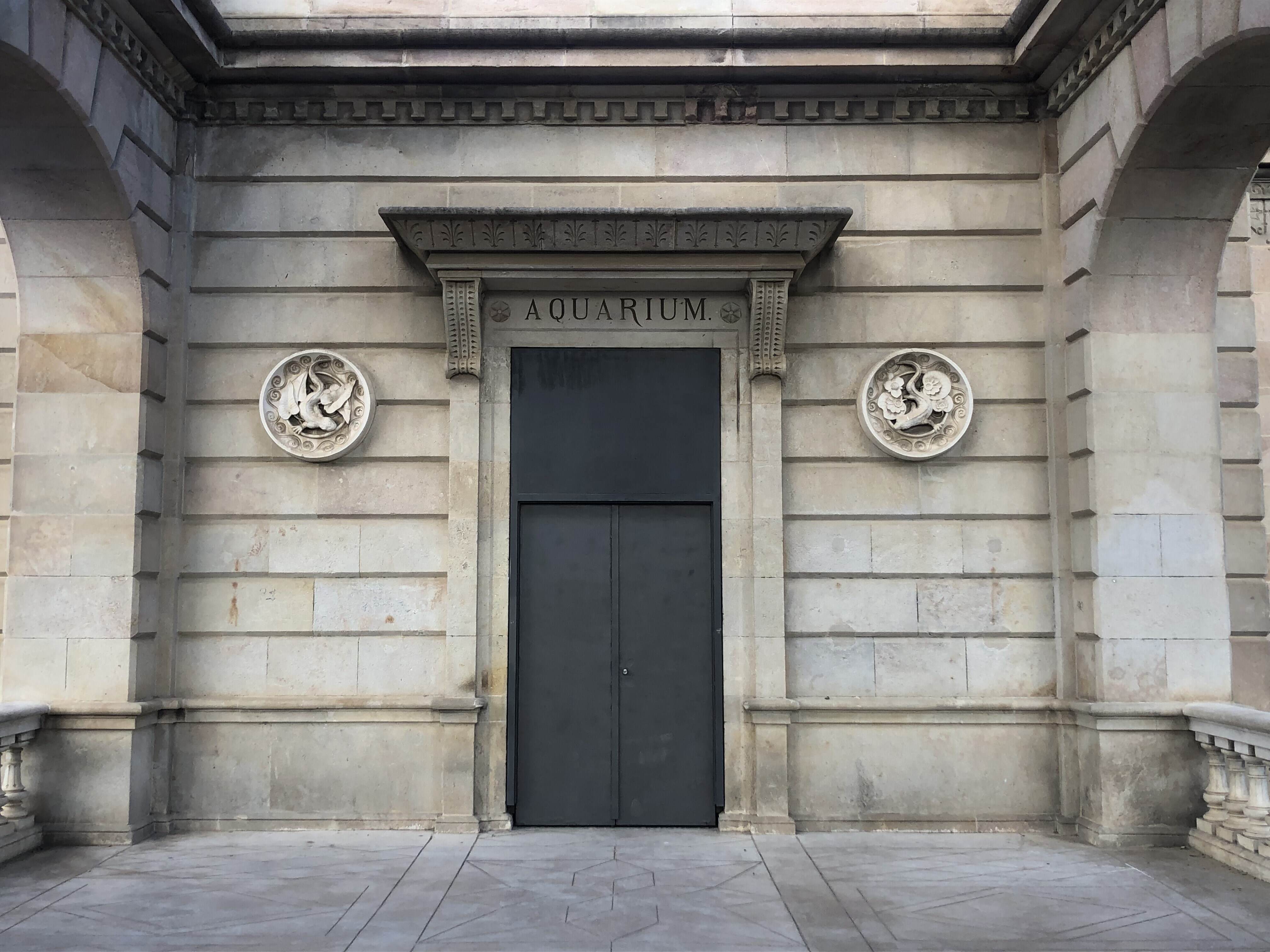
So what did Gaudí have to do with the epic fountain Fontserè designed? A student at the time, Gaudí was in charge of the hydraulic system that powers the fountain, meaning that his contribution to the project isn’t even visible — or so it seems!
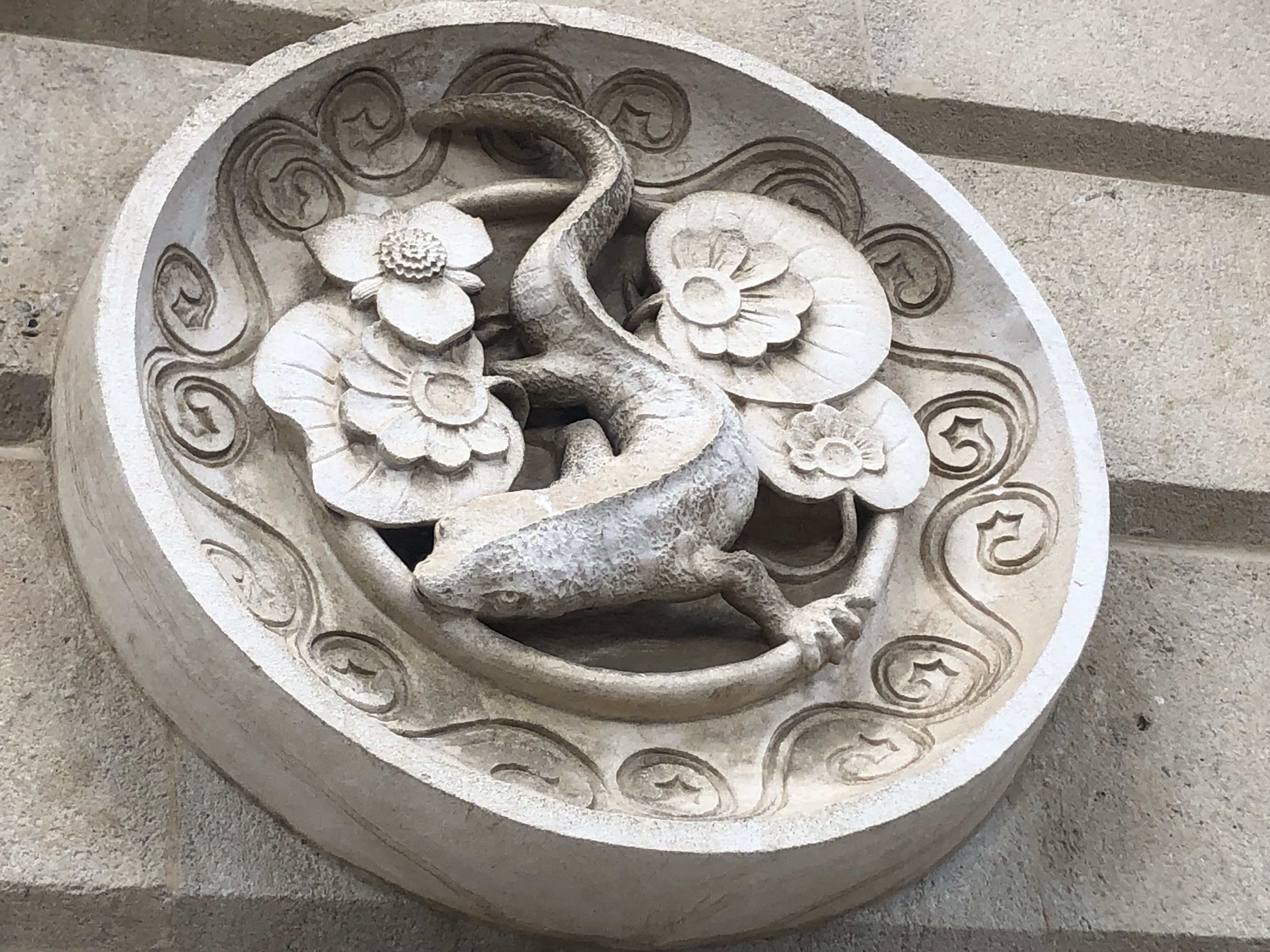
It turns out that Gaudí actually did leave his mark in the form of two lizard statues on either side of a door that says “Aquarium” located at the top of the fountain. The lizard or dragon is a prominent symbol in Gaudí’s work, which you already know if you’ve seen El Drac at Park Güell.
2. Casa Vicens
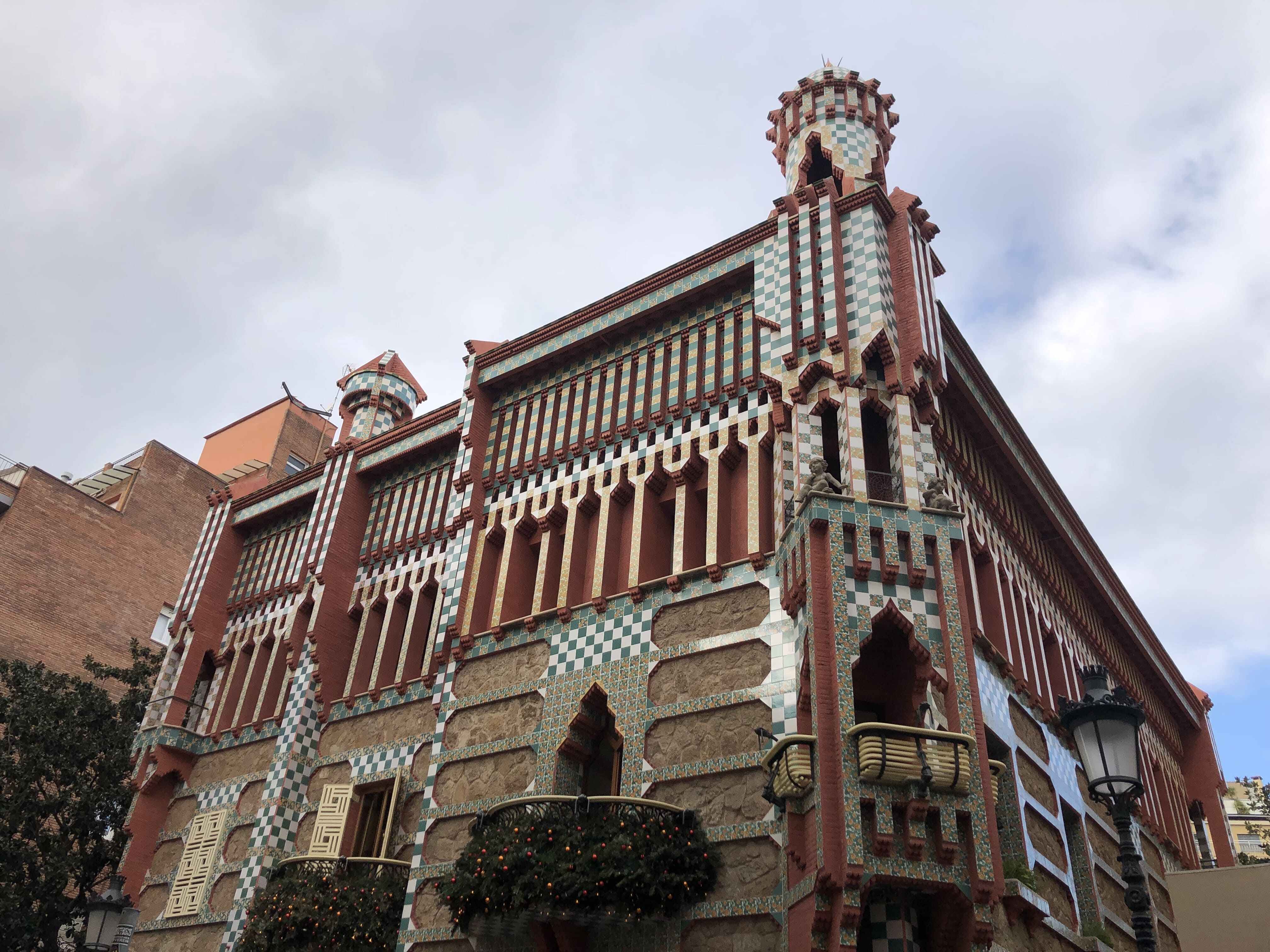
Location: Gràcia
Located on a side street of the popular Gràcia neighborhood, Casa Vicens doesn’t attract the same attention as the other Gaudí houses. Many visitors might not know it’s there, but they also might not realize that this brick building with green and white square tiles is one of the famous architect’s creations.
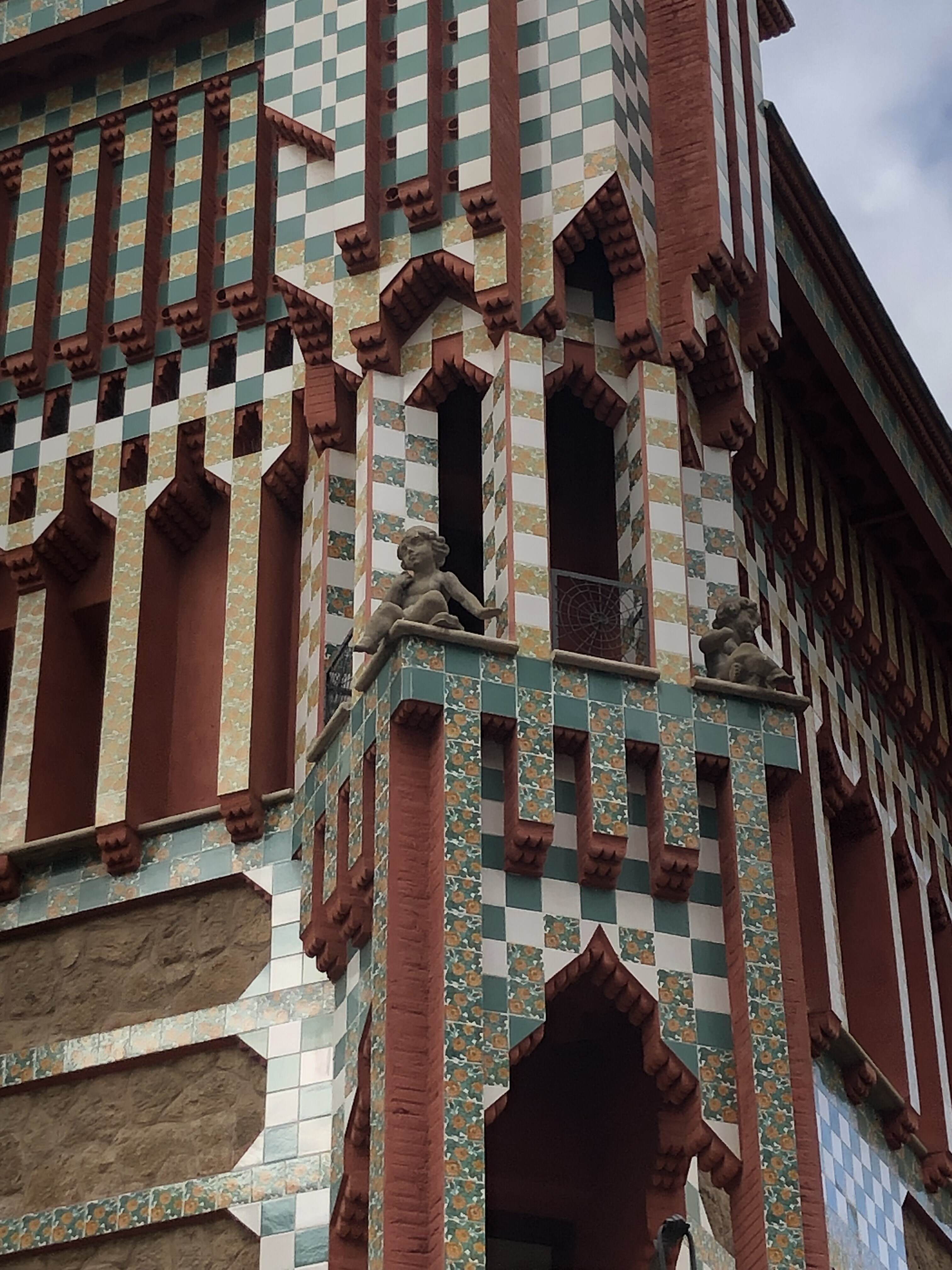
This house was, in fact, Gaudí’s first major commission, meant to be a summer home for Manel Vicens i Montaner. Here was a project that Gaudí could finally sink his teeth into and establish an architectural and design philosophy of his own.
Nature was already a big inspiration for Gaudí. When he first visited the site to take measurements, he noticed that it was covered with yellow flowers that became the main ornamental motif of Casa Vicens. A large palm tree in the yard also inspired him to create an iron grille for the front entrance in the shape of the tree’s fonds.
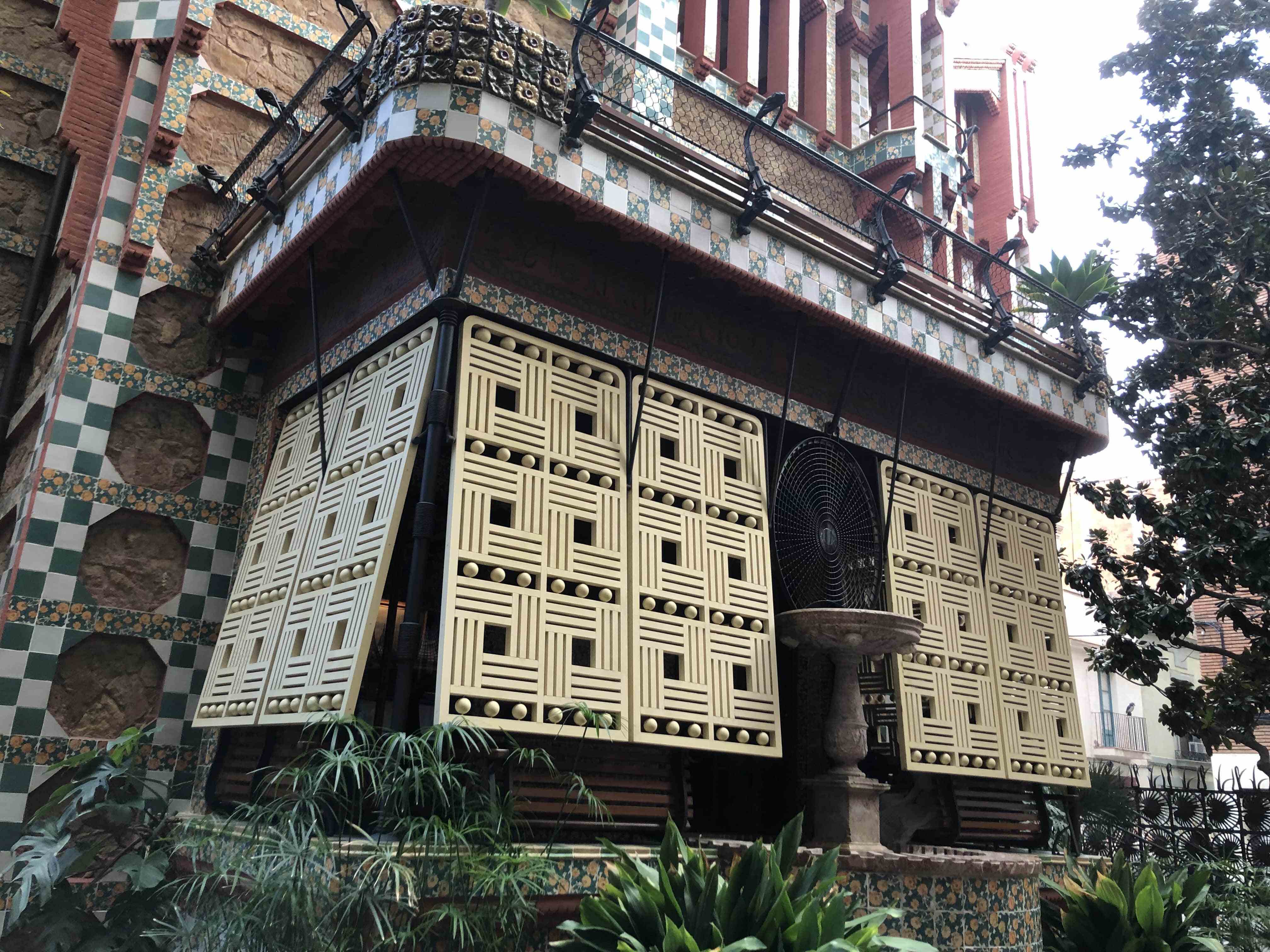
You can’t visit the Vicens House without feeling like you’ve wandered into an oasis. Surrounded by a lush garden that was much larger in the original 19th-century construction, the estate resembles a rainforest and even once included a waterfall.
Both outside and inside the house, it’s clear that Gaudí loved using nature as architecture. Walking through Casa Vicens, you’ll find rooms that look like gardens with their bird-covered wallpaper and ceramic foliage climbing the walls and ceilings.
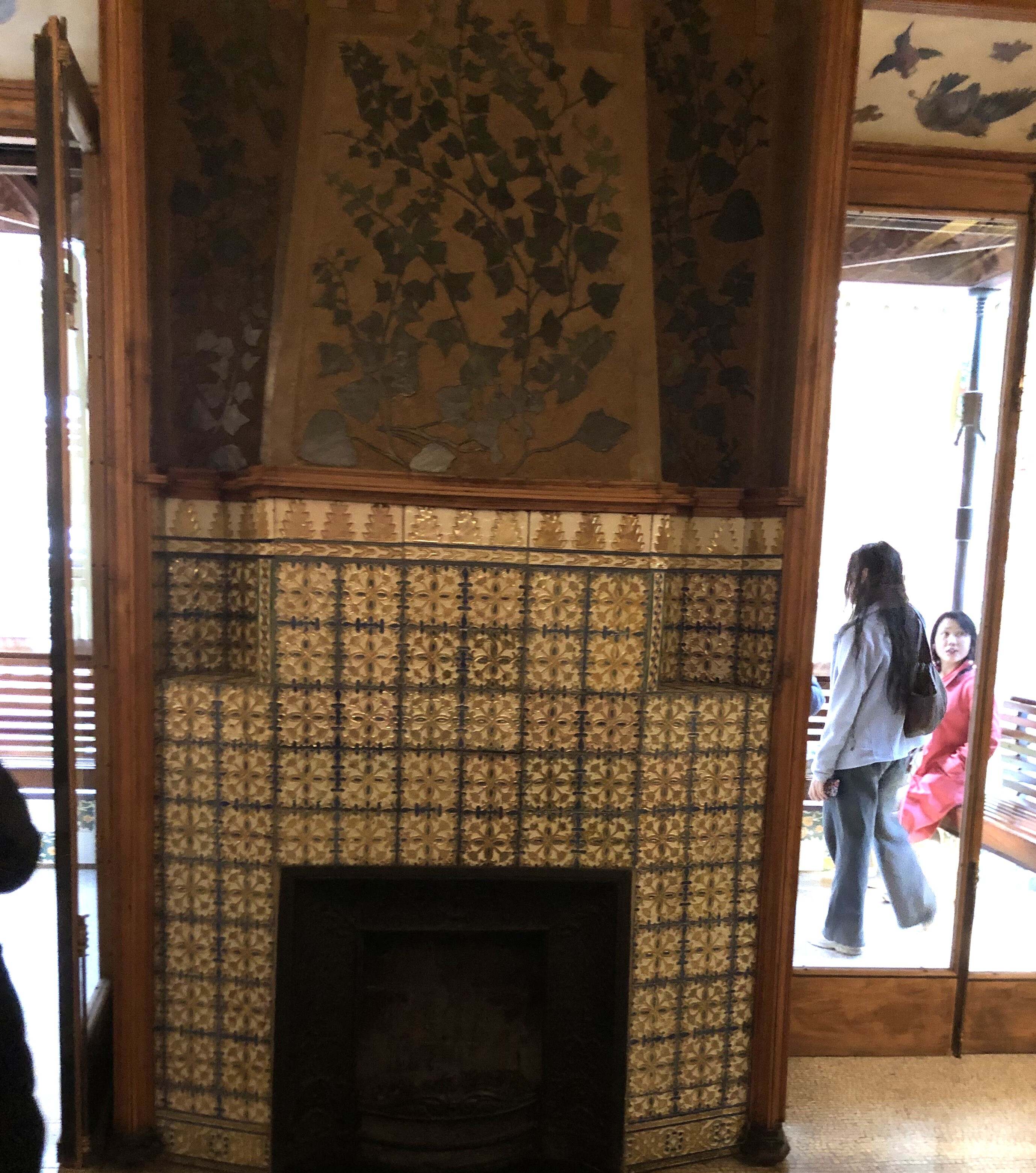
Local tip: For a spectacular view of the neighborhood, don’t miss climbing to the rooftop inspired by Indian, Moroccan, and Egyptian architecture.
3. Sant Pacià
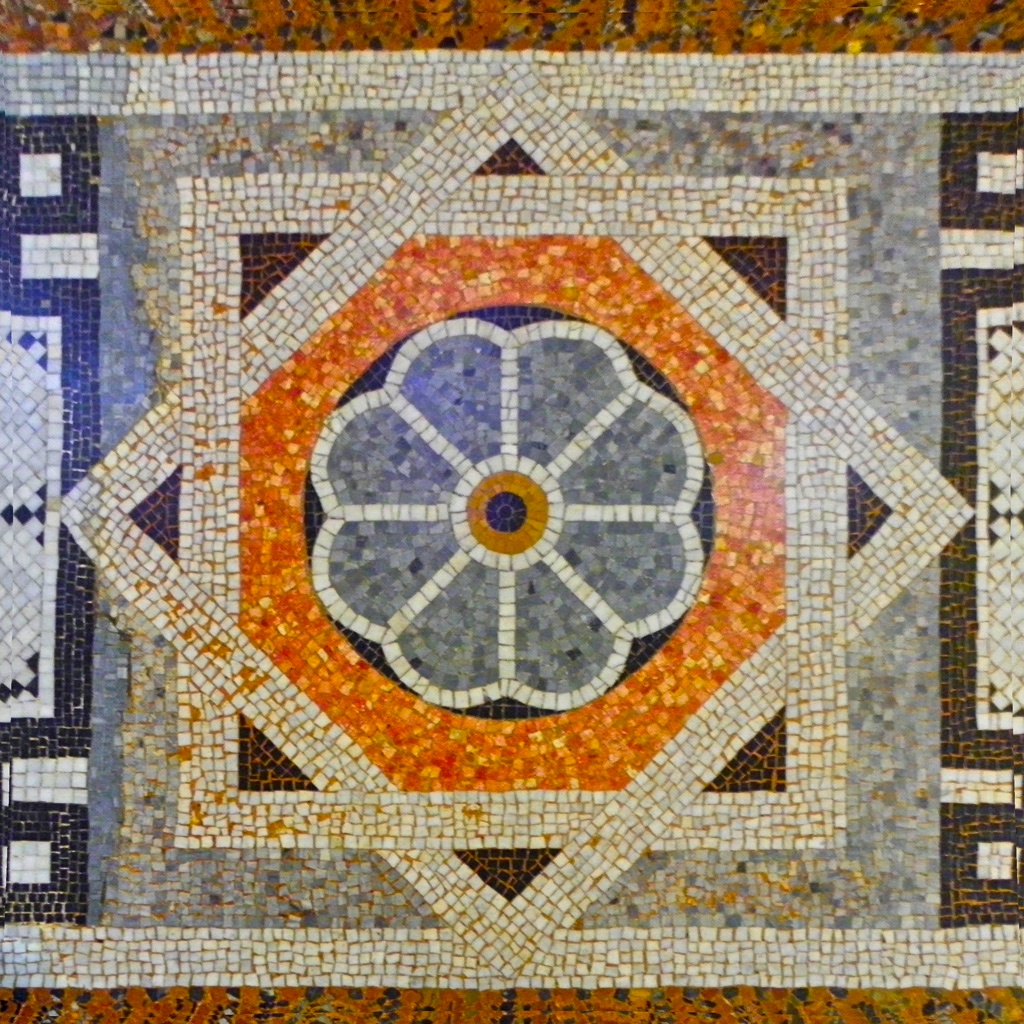
Location: Sant Andreu
While most churches, including Gaudí’s Sagrada Família, have beautiful ceilings that encourage you to look up (toward the heavens, of course), the Parish of Sant Pacià also has a mosaic floor that will have you looking down.
The Gothic-style church was designed by Joan Torras Guardiola in 1881, and Gaudí, a student of Guardiola, was commissioned to design the floor.
It’s not as colorful as the broken mosaic designs you’ll find at other Gaudí sites, but it’s a rare example of Gaudí using straight lines, which he considered unnatural and often avoided using in his larger projects. Mimicking the shapes he saw in nature was just as important to him as conveying his devotion to God.
4. Casa Calvet
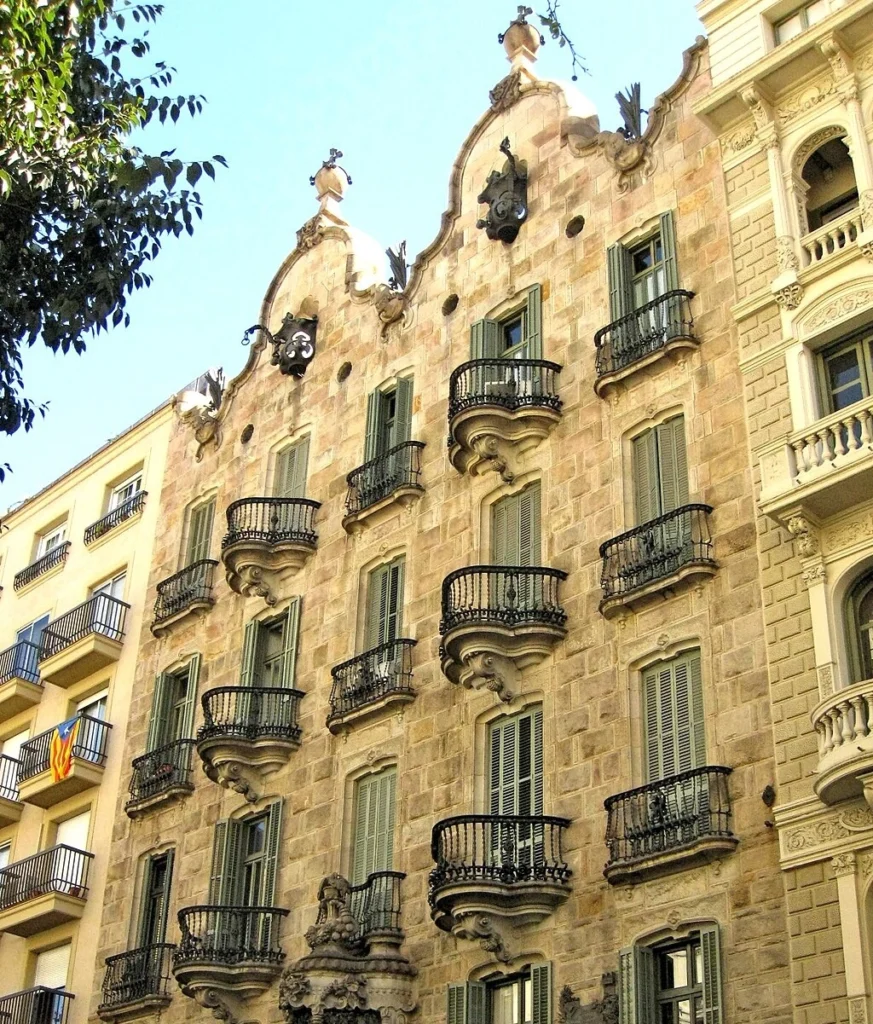
Location: Eixample
Built using stone from Montjuïc, a small mountain in Barcelona, Casa Calvet is sometimes considered to be conservative by Gaudí standards.
Maybe it lacks some of the whimsy of Park Güell or the ornate splendor of Sagrada Família, but its iron balconies and curved attic roofs look like they’re right out of a fairy tale.
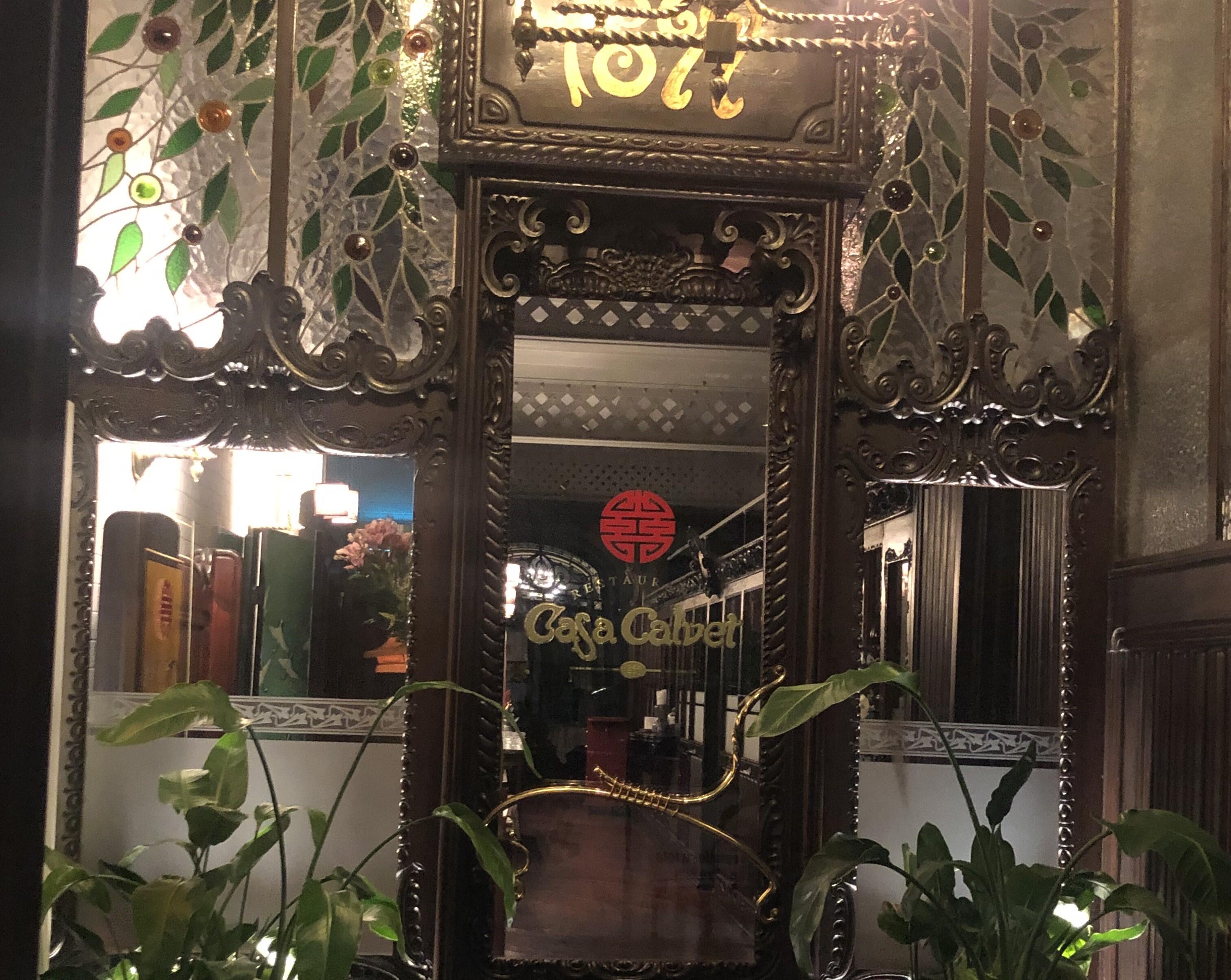
Once the private residence of Pere Màrtir Calvet, Gaudí’s tribute to Catalan Baroque architecture is now home to a Chinese restaurant on the ground floor and is a lovely building to admire while walking along the street.
5. Portal Miralles
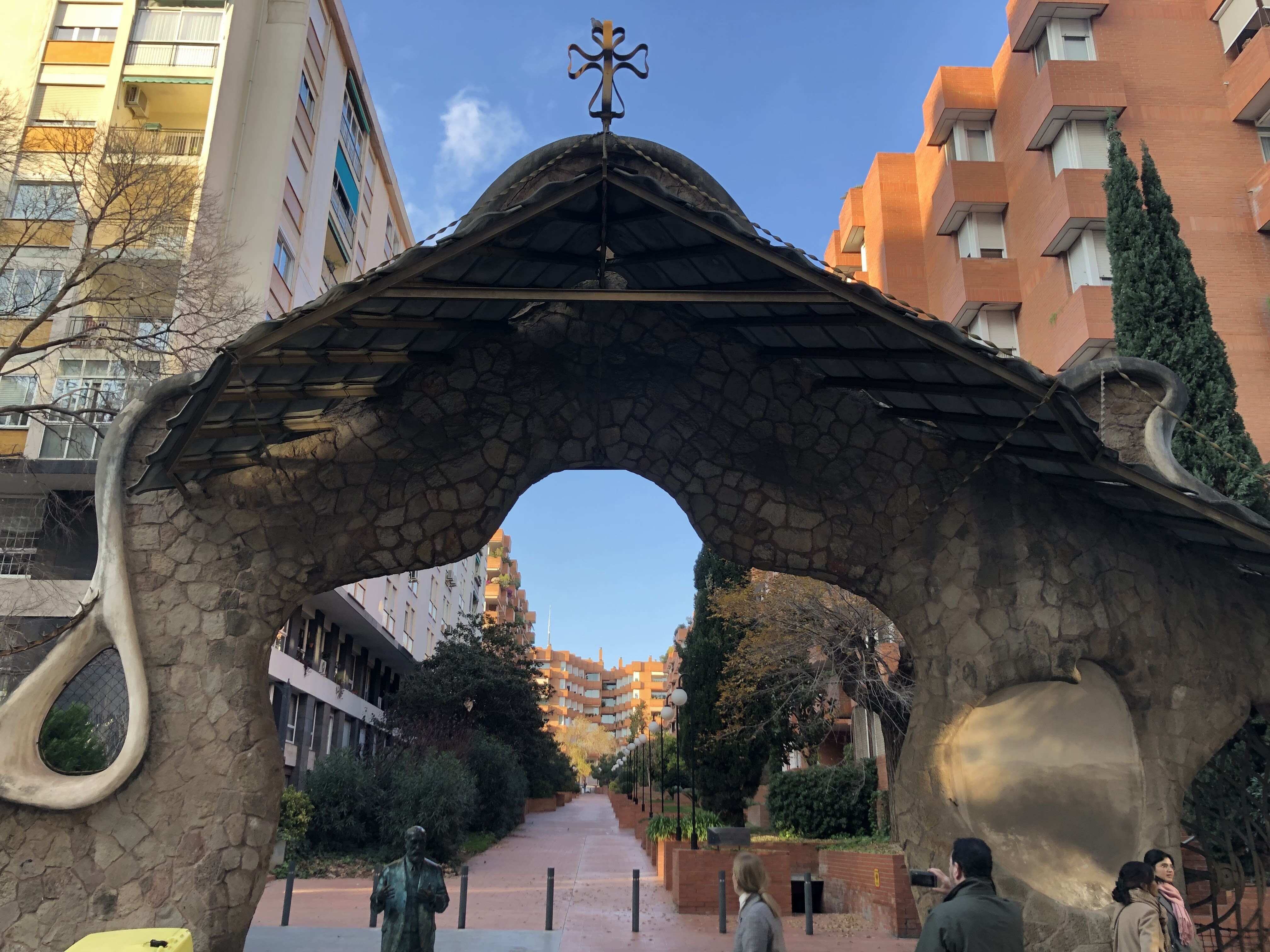
Location: Sarrià
The Portal Miralles, a modernist gate that served as an entrance to the Finca Miralles that once stood behind it, is thought to be one of Gaudí’s least-known projects in Barcelona.
In 1901, the rich industrialist Hermenegild Miralles commissioned Gaudí to create an entrance to his large estate. In true Gaudí fashion, the gate resembles a reptile’s skin with iron arches like the curves in a snake’s back and white stone used to create a trencadís (broken mosaic) effect.
Today, the gate stands in front of a quiet block of apartment complexes, but it’s a striking structure that is free and easy to see if you find yourself in the neighborhood.
Of all the Barcelona hidden gems on this list, this one is probably the most hidden, though it’s hidden in plain sight, as they say. There’s just a lot to discover in this city! Check out some more things to do in Barcelona.
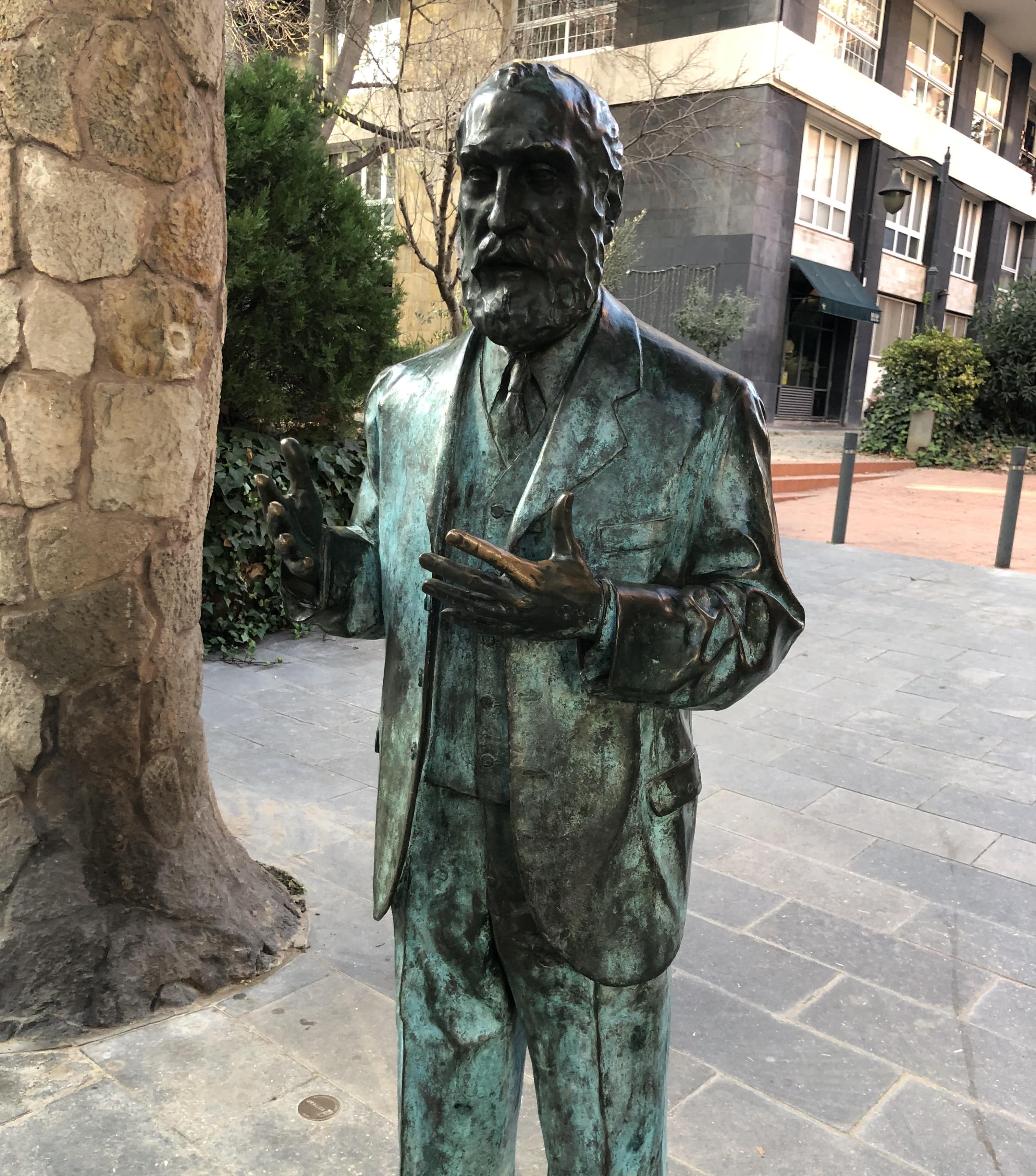
Bonus: Snap a picture with the statue of Gaudí sculpted by Joaquim Camps that was placed in front of the gate back in 2000.
6. Pavellons Güell
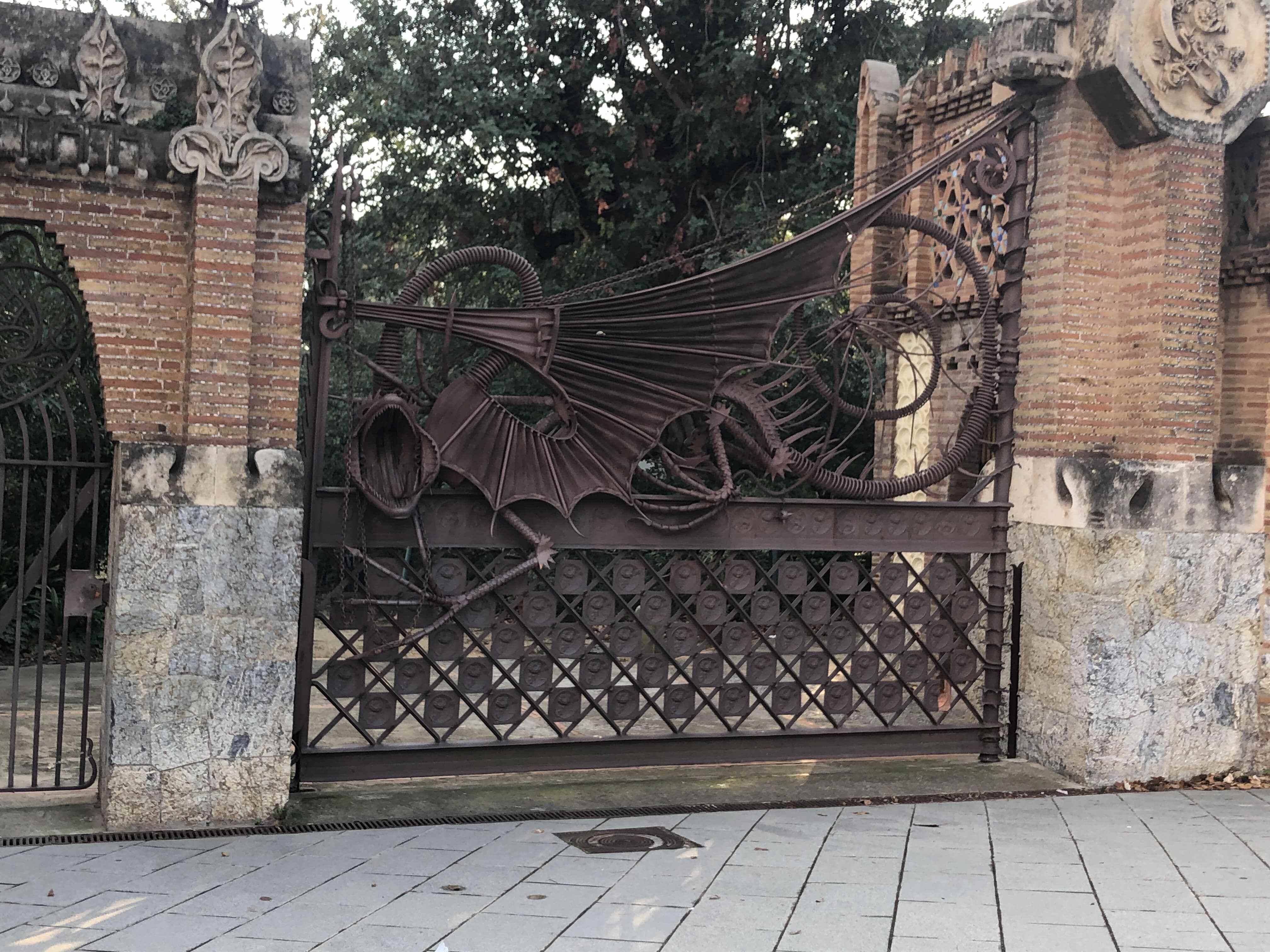
Location: Pedralbes
You’ll know the name Eusebi Güell from the park that bears his name, but that wasn’t the first time the rich industrialist commissioned Gaudí. For this project, Gaudí was tasked with designing two pavilions and redesigning the garden on the Finca Güell estate.
The gatehouses stand out with their colorful ceramic decorations, but the real star of the estate is the iron dragon gate that menacingly bears its wings and teeth like it’s protecting the house from intruders.
Tip: The Güell Pavilions are temporarily closed, but you can still take a picture of the magnificent dragon gate.
7. Torre Bellesguard
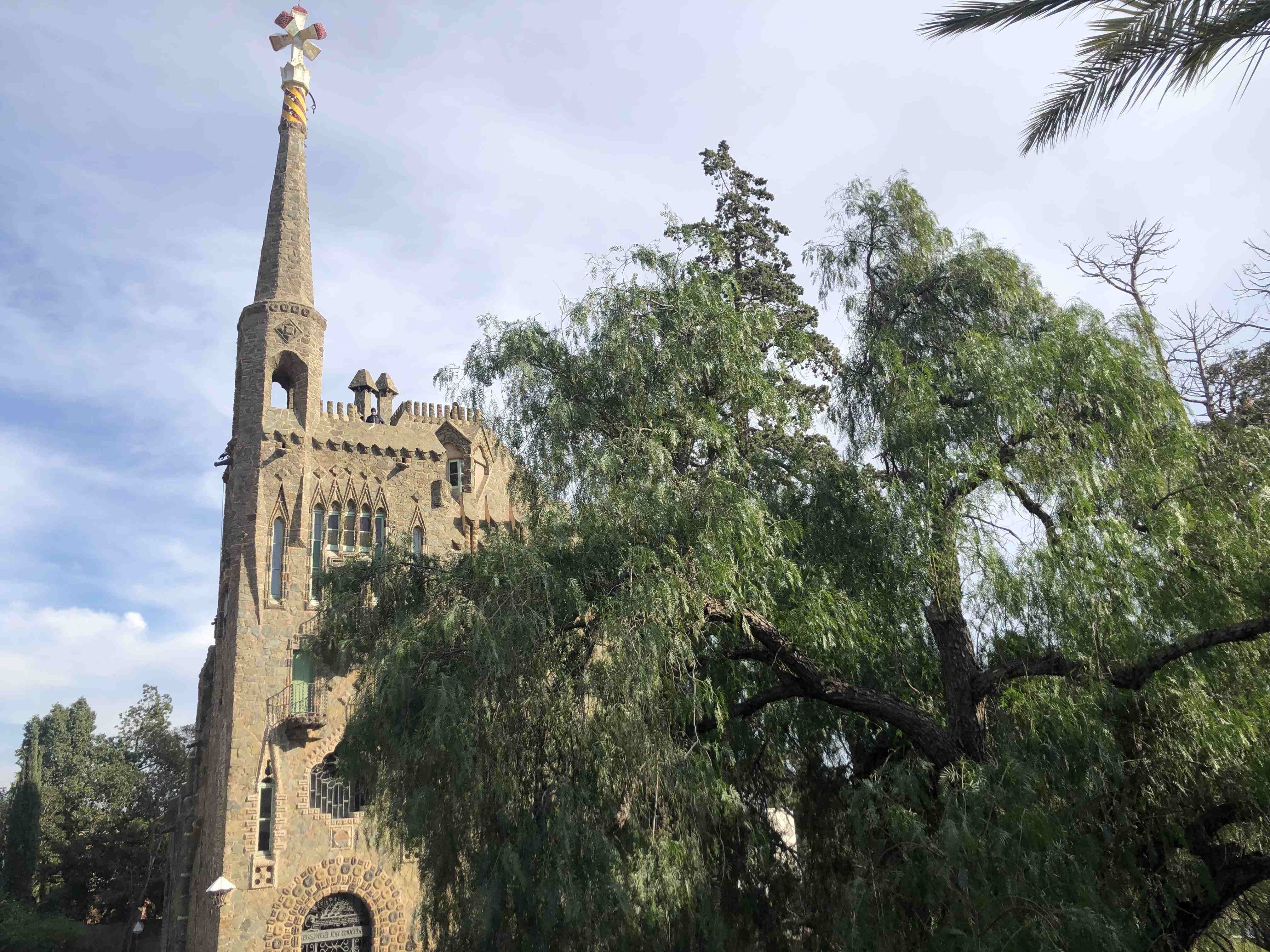
Location: Sarrià-Sant Gervasi
Gaudí built the Bellesguard Tower between 1900 and 1909, but its history reaches back at least as far as the 15th century when it was the residence of Martin I the Humane, King of Aragón. The remains of the medieval castle that were found here in the foothills of the Collserola Mountains inspired Gaudí’s design for the private family residence he constructed on the site.
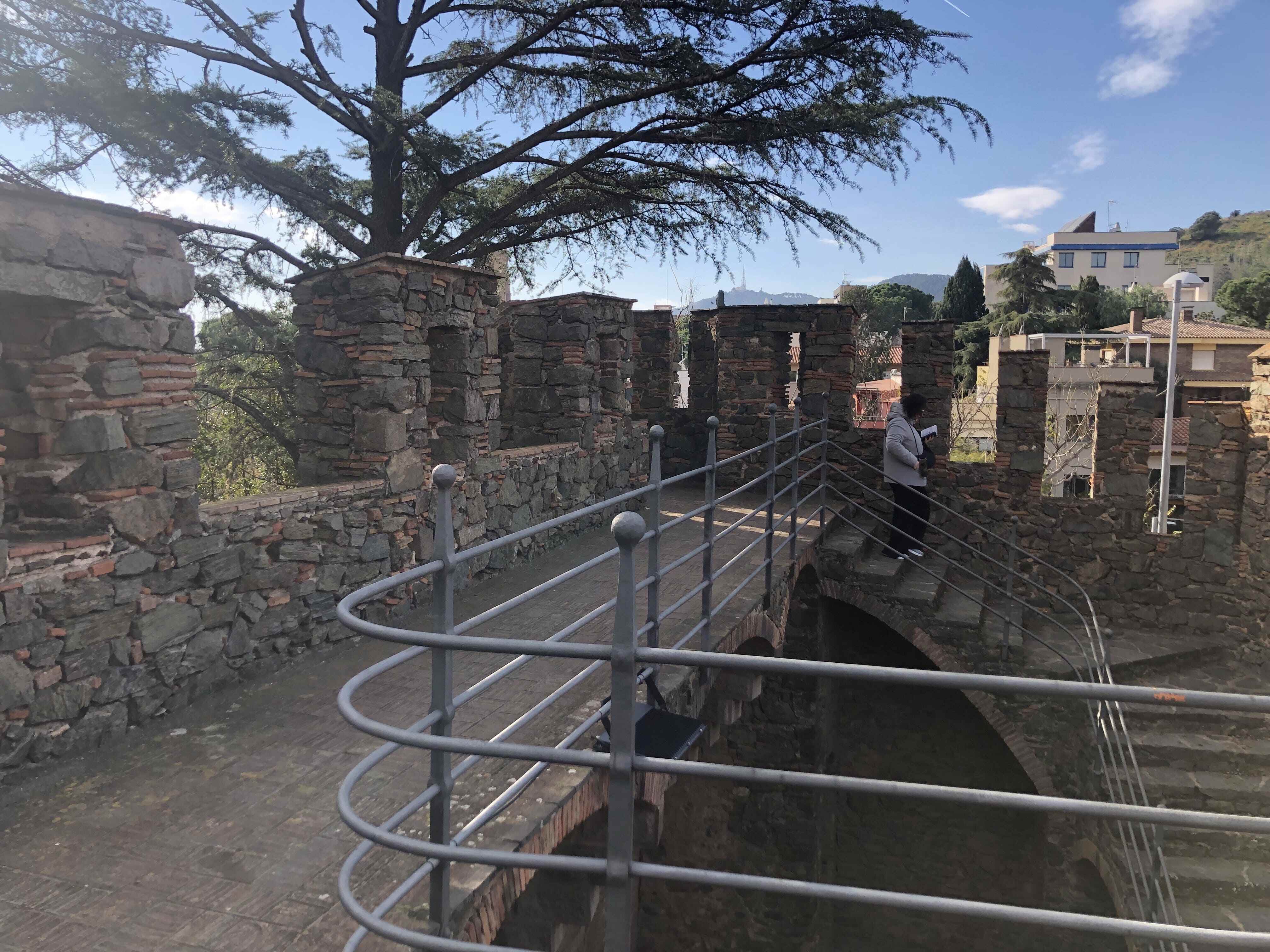
The tower brings to mind a Gothic castle, only it has the typical Gaudí flourishes of colorful mosaics and wrought iron.
But there are other Gaudí signatures you’d be familiar with after visiting Sagrada Família or Park Güell with one of our guides.
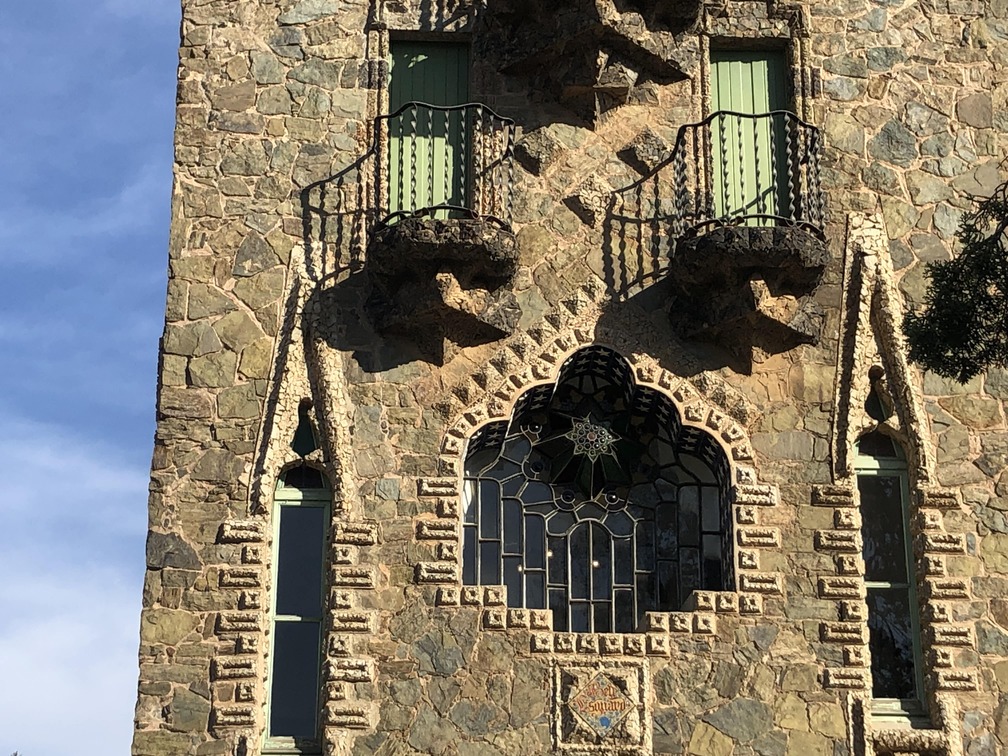
In the courtyard is a cool echo bench decorated with broken mosaics like the one at Park Güell. What makes it an “echo” bench? When you visit Torre Bellesguard, sit at opposite sides of the bench with your friend and start talking to each other. Your voices will carry along the back of the bench so that it sounds like you’re sitting right next to each other.
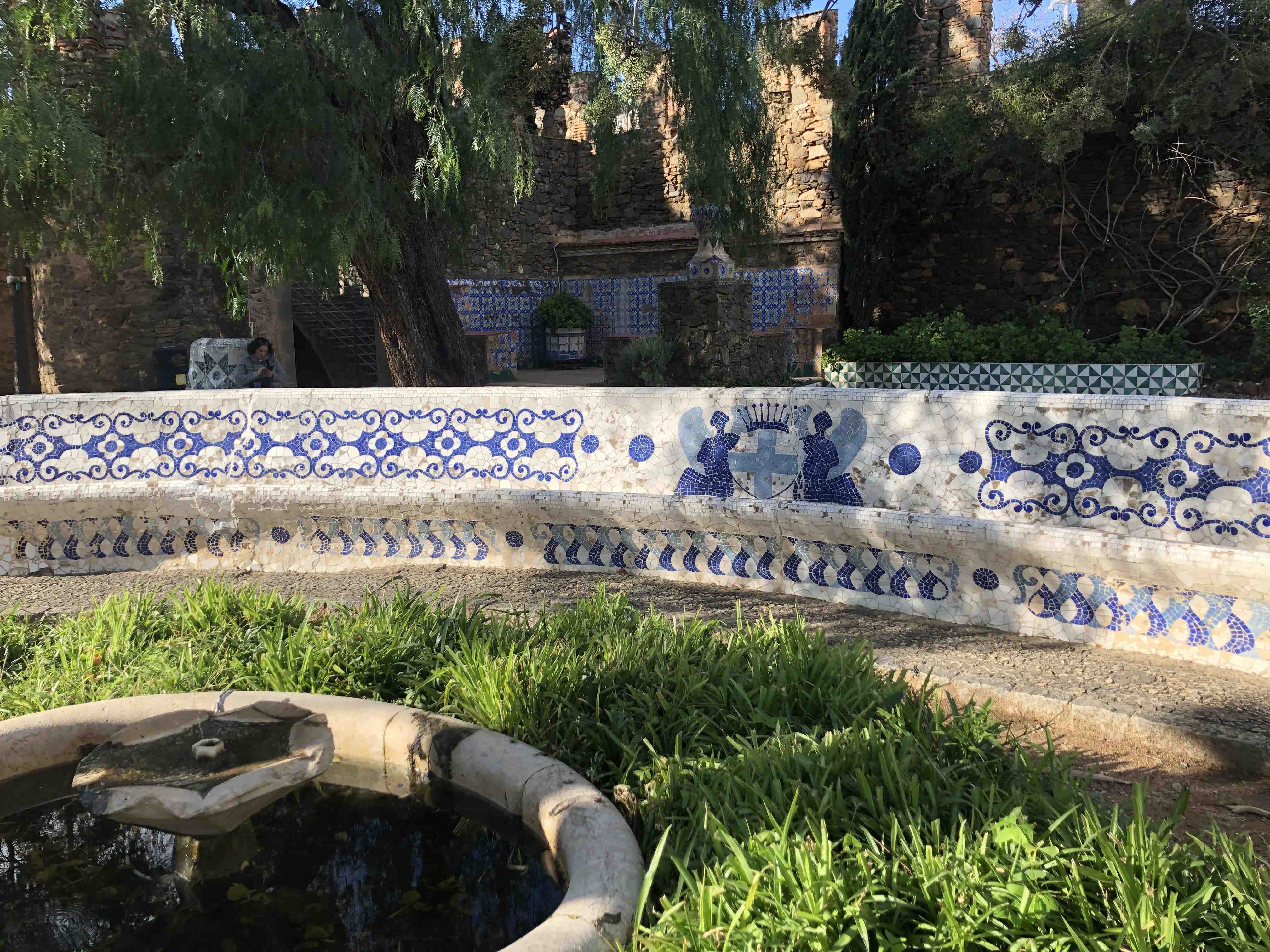
Another Gaudí signature is that what’s on the inside is a complete surprise from what’s on the outside. From the outside of the Sagrada Família, you never quite expect what awaits you inside, and you’ll feel the same way about the rooms of Torre Bellesguard.
Here’s just a glimpse of one so you can see what I mean. Surprising, right?
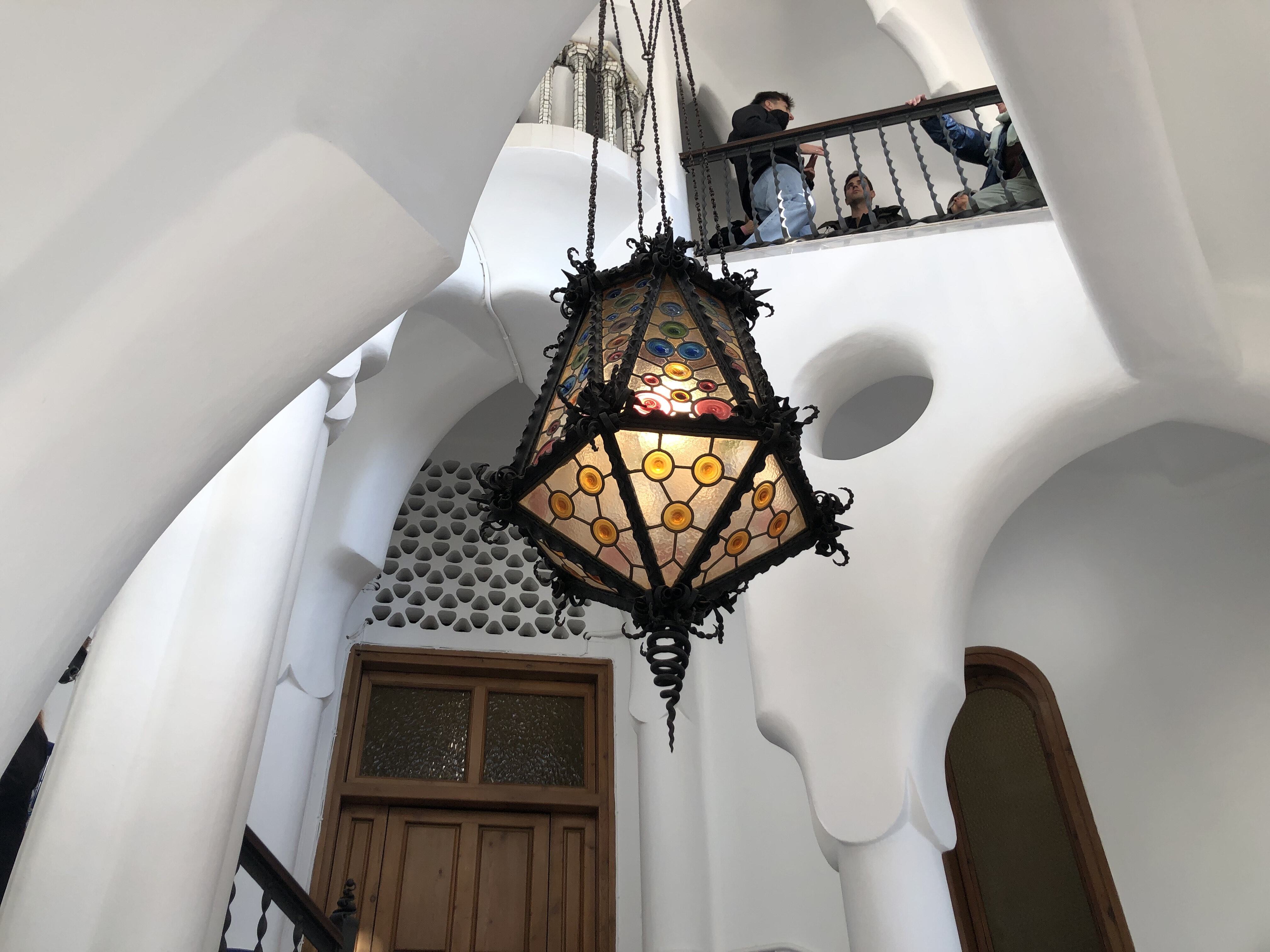
More ways to see Gaudí’s architecture in Barcelona
Pair this self-guided tour with a Gaudí Architecture Walking Tour to learn more about how this architectural genius left his mark on Barcelona.
Along with Gaudí’s hidden gems, don’t miss his biggest hits. You can immerse yourself in two of the best with an expert guide to show you all the details you might otherwise miss on our half-day Sagrada Família and Park Güell Combo Tour.